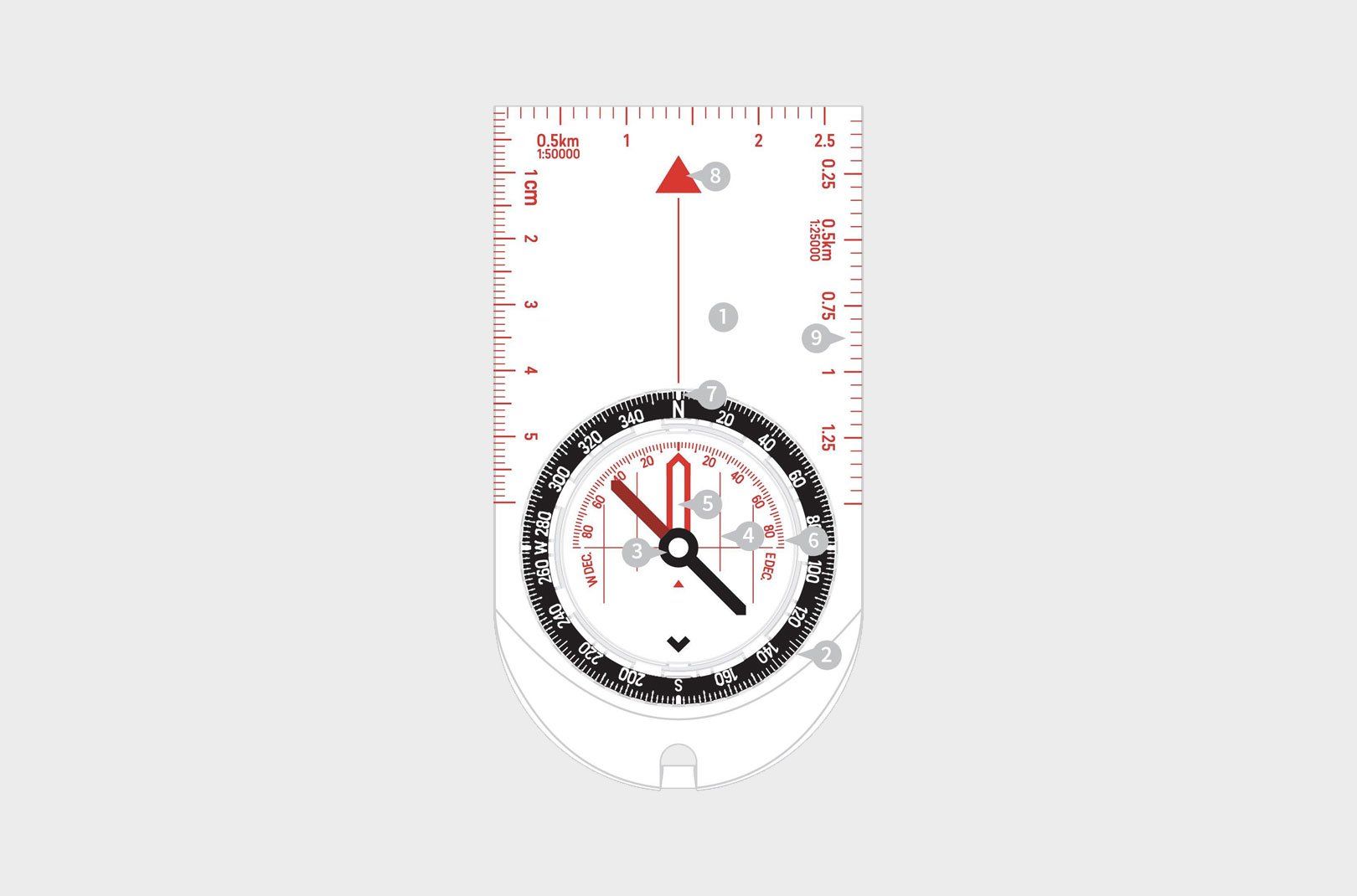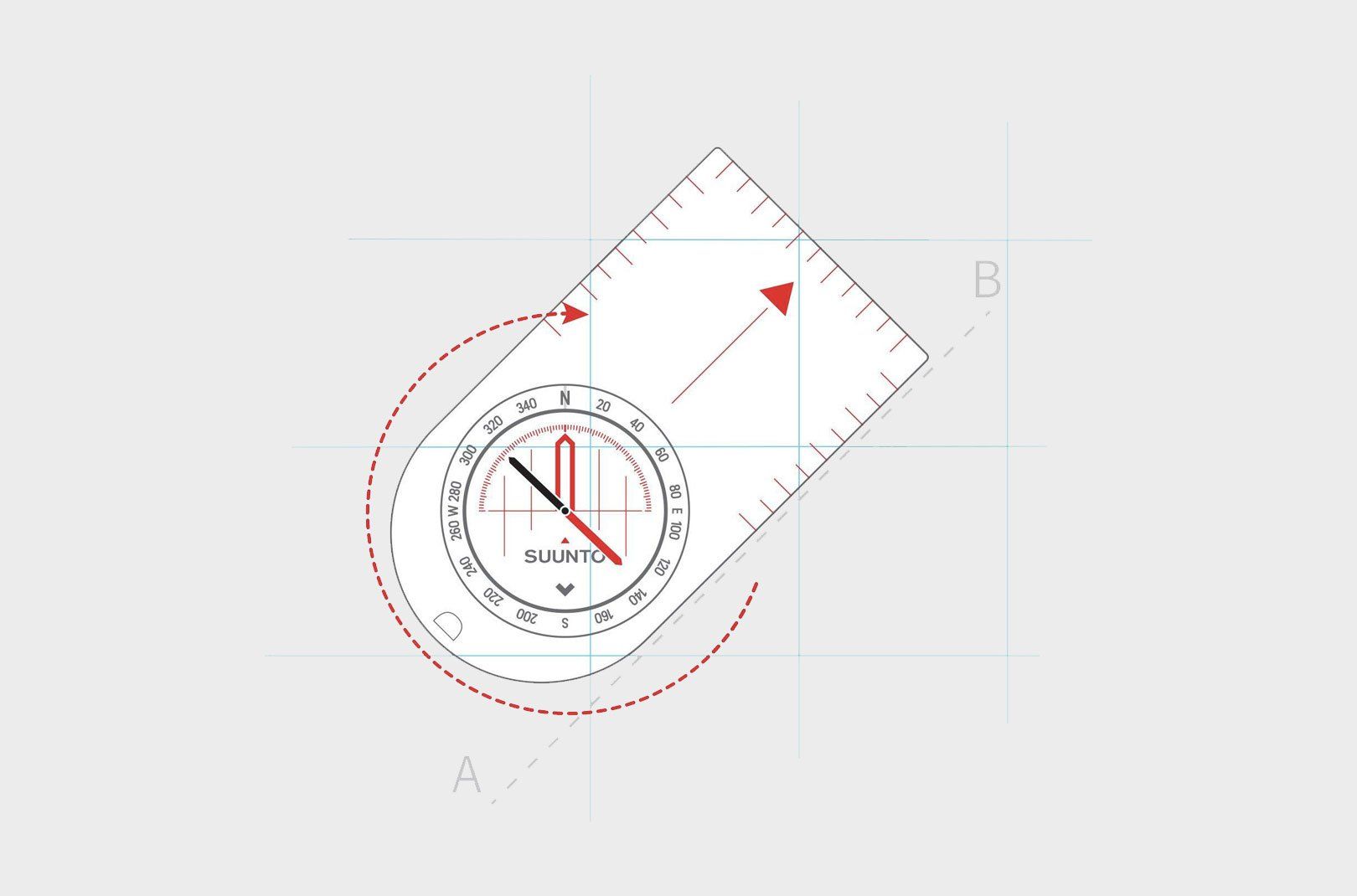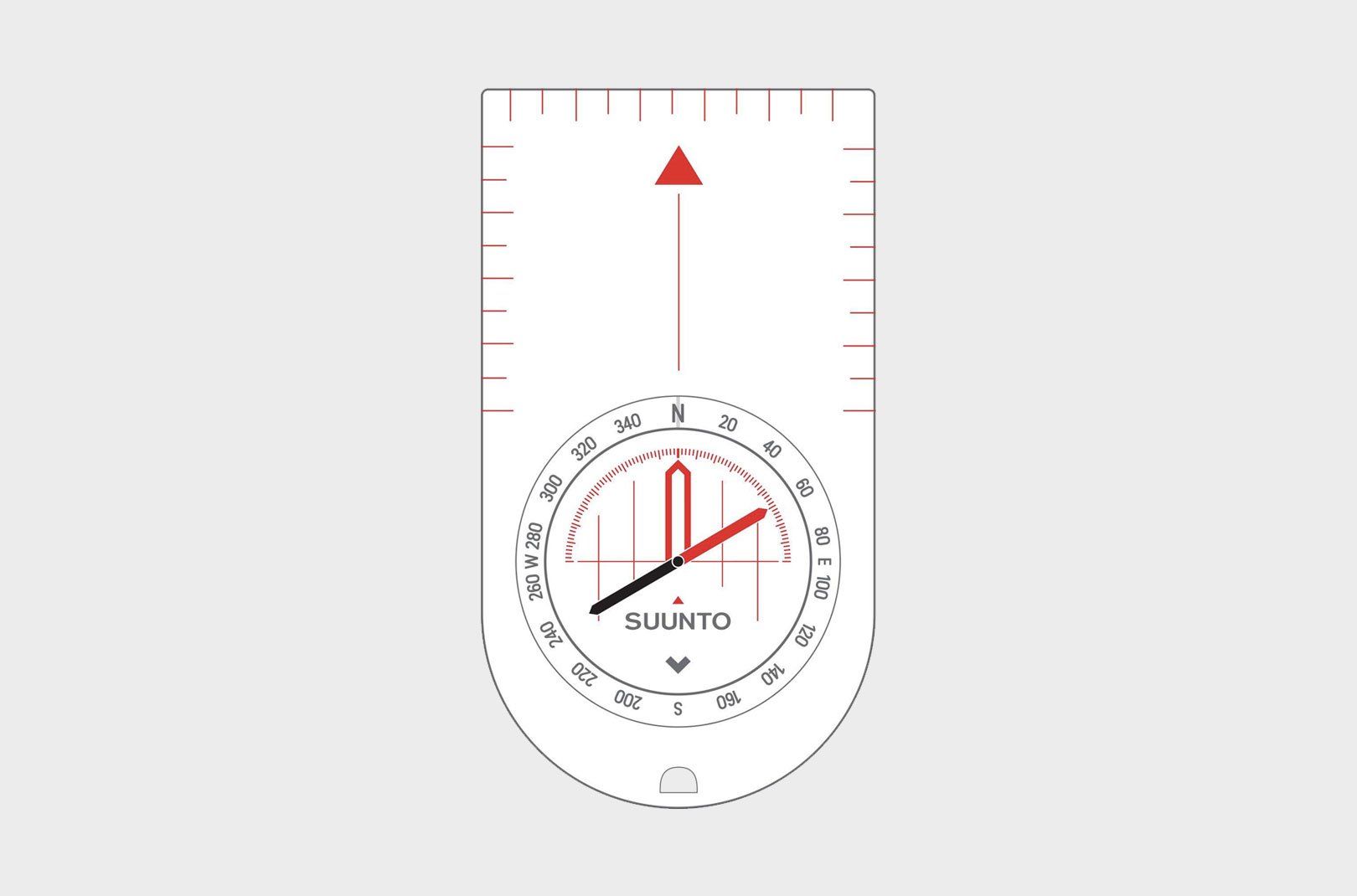Despite our reliance on mobile phones and sat navs, you can’t beat navigating using a map and compass. It’s fun, easy when you know how and is way more reliable than your phone’s battery life or signal.
Ordnance Survey is the national mapping agency for Great Britain and so what they don’t know about navigation, isn’t worth knowing. We asked them to share their expert knowledge for this introductory guide so you can learn how to use a compass in no time at all.
After reading our Understanding a Map with Ordnance Survey guide you should feel confident on how to read and understand your map. The next step is to learn how to orientate your map to the land so that you can use it to navigate. The best way to do this is with a Compass.
Contents
Knowing your way around a compass can appear complex, but is actually easy when you have the knowledge. Navigate through the sections here:
Features
What is a Compass Made Of?
Looking at the below image you will see all of the components that make up a Compass.

- Baseplate: The mounting of the compass.
- Compass housing: Contains the magnetic needle and has the points of the compass printed on a circular, rotating bezel.
- Needle: Floats in liquid so it can rotate freely, the red end points to magnetic north.
- Orienting lines: Fixed within the compass housing and designed to be aligned with the eastings on a map.
- Orienting arrow: Fixed within the compass housing, aligned to north on the housing.
- Declination line: Enables conversion between grid and magnetic north.
- Index line: Fixed beneath the rotating bezel of the compass, it marks the bearing you wish to travel along.
- Direction of travel: arrow Shows the direction that you want to travel along once you have taken your bearing. It is an extension of the index line.
- Compass scale: Displayed along the edge of the base plate so you can measure distances on maps.
Navigation
How to Use Your Compass
Where do you want to go? From your starting point on the map, place the index line on an imaginary line between where you are now and where you want to be, with the direction of travel arrow on the base plate pointing the way.
Start by drawing a line from A to B now. Holding the baseplate in place, rotate the compass housing so the orienting arrow lines up with grid north on the map. The orienting lines should be parallel with the vertical blue grid lines (eastings). See the image below for an example.

Did you know? Compass readings can be affected by the presence of iron and steel objects, so keep your compass away from pocket knives, belt buckles and mobile phones where possible.
Take your compass off the map. Hold your compass flat at waist height and turn yourself until the red needle meets up with the letter N and is positioned over the orienting arrow.

You’re ready to go! The red direction of travel arrow will point the way.
Landscape
Using Land Features
As an alternative to using a compass to orientate your map, you can use your eyesight. This method will only work if you are in an area with visible prominent features or landmarks. First, locate yourself next to a feature or landmark and place your finger on the map at the point where you are standing. Then begin to rotate the map so that other features and landmarks on the map begin to line up with the actual ones you can see. The map is now orientated with the land, although not as accurately as it would be using a compass.
OK, so now you can comfortably use your compass and read a map. But before you put on your boots and pack your rucksack, take the time to read through the following handy tips and safety points to ensure you get the most from your adventures.
Safety
Navigating at Night or in Bad Weather
Navigating in fair conditions should present no great problems to an advanced walker. Poor conditions don’t require new techniques, just a more skilful and determined use of those you already possess. Nevertheless, it is important to draw attention to certain aspects that require special consideration that would prepare you for such conditions:
- Your route plan should note possible escape paths along your route, have a record of compass bearings, distances and estimated times.
- Check through your equipment before you set off to make sure everything is in working order.
- Make sure you have easy access to essential equipment when you pack your rucksack.
- Use a map case to protect your map from bad weather, or use an OS Explorer – Active map which have a laminated coating to make them weather proof and resistant to wear and tear.
Millets' Top Tips for Outdoor Adventures
Now you have the knowledge, it’s time to head outdoors. Just remember to be safe, respectful and responsible out there. Here’s some top tips before you travel.
Pre-plan Your Mapped Route
Whether it’s your first adventure with a map and compass, or you’re a seasoned walker, plotting your route beforehand is key. We recommend choosing a short or familiar route if you’re just starting out.
Take the Right Gear
At Millets we’ve been ‘getting people outdoors since 1893’ and so we know the importance of having the right gear; especially when it comes to the unpredictable British weather. Now you don’t need to spend a small fortune when kitting yourself and the family out for an adventure, but there are some suitable staples we suggest.
List of Essentials for Walking
- A Waterproof jacket
- Sturdy walking shoes or walking boots (and walking socks!)
- An Ordnance Survey paper map of the area you plan to explore. OS Explorer and OS Landranger maps are also available as laminated, weatherproof Active maps.
- A compass, watch and pencil
- Snacks and plenty of water
- A pocket first aid kit
- Suitable clothing including a baselayer and walking trousers
- (Dog walkers – remember the lead, poo bags and treats!)
Tell Somewhere Where You’re Headed
Before setting it, be sure to let someone know where you’re going, or even better, bring them along. It’s also a good idea to let them know when you’ll likely be back, and have a fully charged mobile phone. Before attempting any walk, make sure you’re confident in your navigational skills by practicing on familiar routes.
Know the Countryside Code
The British countryside is ours to explore; but it is also ours to protect and respect. Before you head out, check our guide to The Countryside Code and ‘Leave No Trace’ principles that help to keep our natural spaces safe.
Get Great Outdoor Inspiration
So you have the skills but don’t know where to start? We’ve collected the best of Britain which is made for adventure to inspire and excite you. Check out our Adventure Finder Guides today to get started!






